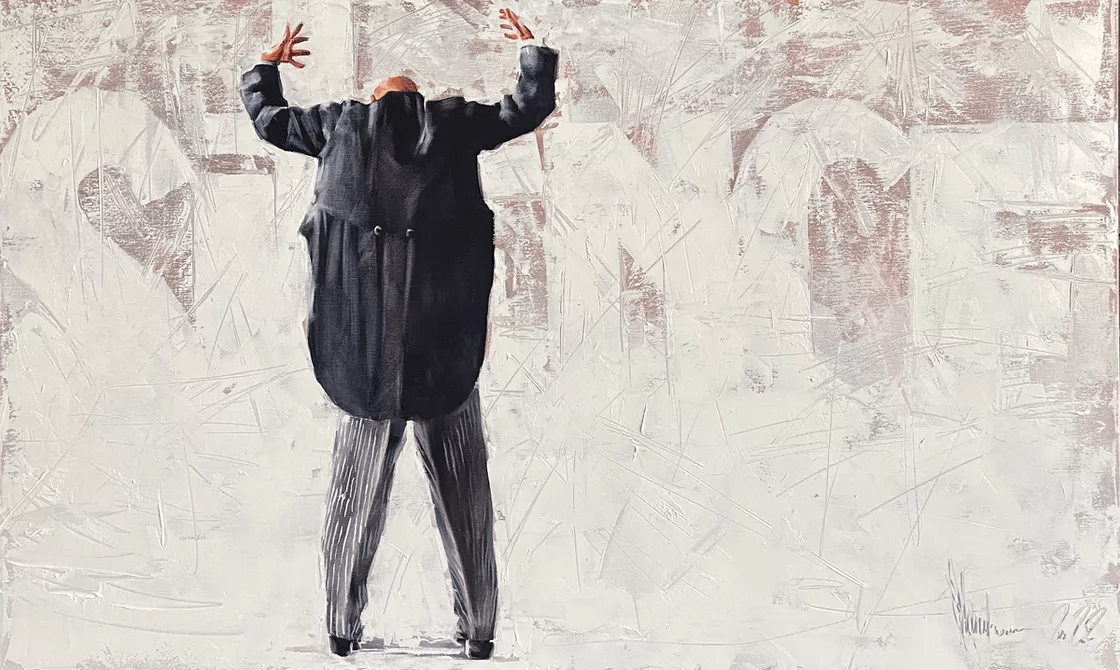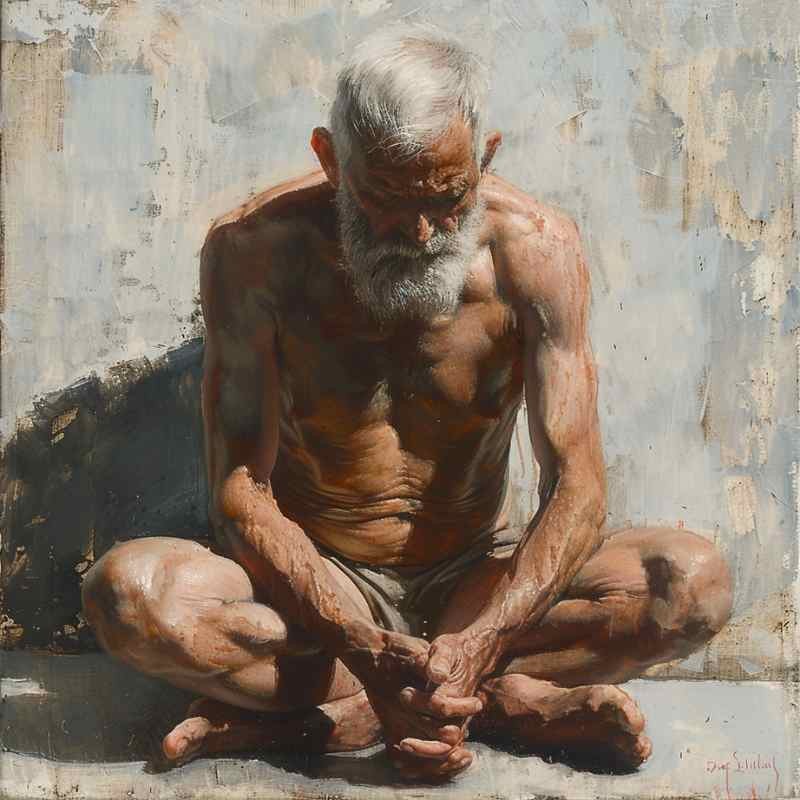The Advancement of Figurative Oil Painting: Understanding Its Historic Value and Modern Interpretations
The advancement of metaphorical oil paint works as an engaging lens whereby to check out the interaction in between imaginative expression and historic context. From the thorough naturalism of the Renaissance to the stirring power of the Baroque, each period has actually added layers of meaning and technique to this timeless tool. Contemporary musicians, attracting from this abundant heritage, are now reinterpreting the human figure in manner ins which challenge standard stories. As we check out these transformations, one should think about exactly how the dialogue in between existing and previous informs not just imaginative technique however also social reflections in a significantly complicated world.
Beginnings of Metaphorical Oil Painting
The beginnings of metaphorical oil paint can be mapped back to the early Renaissance in Europe, specifically in the 15th century. This period marked a considerable separation from the flat depictions and stiff forms characteristic of middle ages art. Musicians began to check out naturalism, stressing the human figure and its emotional expression. The advancement of oil paint enabled greater depth of color and information, enhancing the realism and vibrancy of their work.

In this transformative era, numbers were usually shown within contextually rich environments, showcasing not only their physical features yet also their psychological states. Pioneers such as Jan van Eyck and Titian harnessed the tool's flexibility, utilizing layering techniques to accomplish luminosity and structure. This technology promoted the portrayal of elaborate textiles and the subtleties of skin tones, contributing to the development of portraiture and narrative scenes.
Additionally, the Renaissance emphasis on humanism promoted an admiration for individuality, which consequently affected musicians to develop even more dynamic and relatable figures - figurative oil painting. Because of this, figurative oil painting emerged as a powerful car for narration and emotional engagement, preparing for future creative movements and designs
Secret Historical Motions
Considerable historical activities have actually shaped the evolution of metaphorical oil painting, each contributing one-of-a-kind approaches and methods that expanded the tool's possibilities. The Renaissance marked a turning point, emphasizing realistic look and the human type, with artists like Leonardo da Vinci and Michelangelo pressing the boundaries of anatomical precision and point of view. Following this, the Baroque era brought significant contrasts of light and darkness, exemplified by Caravaggio, who infused spiritual motifs with intense emotionality.
The 19th century introduced Romanticism and Realism, where artists such as Delacroix and Courbet tested classical suitables, focusing on specific expression and everyday life. The arrival of Impressionism further changed the medium by stressing the effects of light and color, resulting in a separation from traditional representation.
In the early 20th century, motions like Expressionism and Cubism redefined metaphorical paint via abstraction and the exploration of emotional deepness. Each of these movements not only mirrored the societal adjustments of their times however additionally prepared for contemporary analyses. The interaction between these historic motions has actually created an abundant tapestry of designs and approaches, affecting contemporary artists in their quest of catching the human experience on canvas.
Methods and Products Development

Throughout the Baroque period, strategies such as chiaroscuro and sfumato arised, improving the emotional resonance of metaphorical structures. Artists started to explore glazes and impasto, adjusting structure and luminosity. By the 19th century, innovations like making use of pre-mixed paints in tubes revolutionized access, permitting artists to paint en plein air and catch the fleeting results of light.
The 20th century experienced the introduction of artificial pigments and mediums, which increased the palette and modified the consistency of oil paints. The exploration of brand-new application methods, such as scheme blades and brushes of varying rigidity, further varied imaginative expression. Collectively, these innovations reflect the advancing relationship in between products, techniques, and the creative vision integral in figurative oil paint.

Contemporary Analyses
Contemporary interpretations of figurative oil painting show a vibrant discussion in between tradition and innovation, where artists test developed standards and explore diverse styles. This development materializes in various methods, as modern artists blend classic techniques with modern concepts, typically attending to social, political, and individual narratives.
Numerous specialists draw inspiration from historical jobs, yet they instill their items with contemporary perspectives, utilizing the human kind as a lorry for discourse on identification, sex, and culture. Artists significantly try out abstraction, distortion, and blended media, which enables a more comprehensive interpretation of the figure and its context.
In addition, making use of vivid color palettes and unique structures often serves to interfere with typical checking out experiences, provoking critical involvement from audiences. This change in focus expands beyond visual appeals; it mirrors a growing awareness of the complexities of human experience in an interconnected globe.
As figurative oil paint find this continues to evolve, it stays a vital tool for checking out the subtleties of contemporary life, personifying both a respect for heritage and a dedication to progressive idea. The outcome is a rich tapestry of expression that reverberates with the complexities of the contemporary human problem.
Effect On Modern Art
The influence of figurative oil painting on modern-day art is extensive, as it has consistently inspired a myriad of creative activities and practices throughout the 20th and 21st centuries. From Expressionism to Surrealism and past, the expedition of the human figure has continued to be a main theme, enabling musicians to share complex emotions and stories. This focus on metaphorical representation has brought about a re-examination of traditional methods, causing innovative techniques that blend realism you can look here with abstraction.
Moreover, contemporary musicians have embraced metaphorical oil painting as a way to address political and social issues, using the tool to challenge assumptions of identification, culture, and gender. The renewal of passion in figurative work in recent years shows a hoping for link in an increasingly digital world, where human experience and emotion are vital.
In addition, the dialogue between metaphorical oil paint and modern art is noticeable in the works of artists such as Kehinde Wiley and Jenny Saville, that make use of historic referrals while instilling their items with contemporary relevance. Eventually, metaphorical oil paint remains to shape and redefine contemporary imaginative expression, emphasizing its enduring importance in the art world.
Conclusion
The advancement of figurative oil paint highlights its historical significance and flexibility throughout different artistic movements. From the naturalism of the Renaissance to the stirring expressions of the Baroque and the cutting-edge techniques of modernity, this tool has actually consistently transformed. Contemporary interpretations reflect dynamic colors and unconventional compositions, cultivating critical involvement with political and social styles. Ultimately, metaphorical oil painting remains an essential tool for checking out the human experience, reverberating exceptionally in today's digital landscape.
The development of metaphorical oil painting serves as an engaging lens through which to check out the interaction in between creative expression and historic context.Significant historic movements have actually formed the development of metaphorical oil painting, each contributing distinct ideologies and techniques that increased the medium's possibilities.As historic activities shaped the trajectory of metaphorical oil painting, the products and techniques utilized by musicians have actually also gone through considerable makeovers. figurative oil painting.The effect of metaphorical oil paint on modern art is profound, as it has continually inspired a myriad of creative activities and practices throughout the 21st and 20th centuries.The development of metaphorical oil painting highlights its historical importance and flexibility across numerous artistic movements